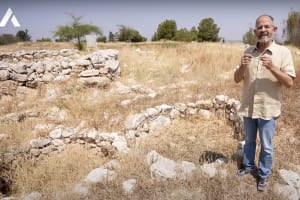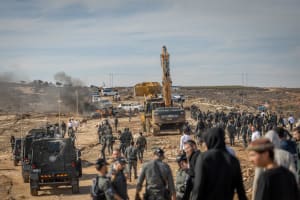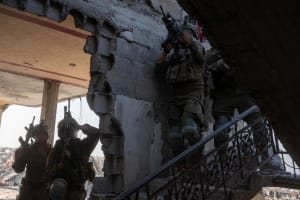Come with me to... Tel Dan

Tel Dan Nature Reserve is in Israel’s far north, very close to the border with Lebanon, in a beautiful and lush area, traversed by the Dan River – one of the three rivers that a bit further south converge and turn into the Jordan River. One of the oldest trees in this beautiful nature reserve is a hollow 120-year-old Syrian ash which the local kids started calling the “Winnie the Pooh tree” because it was hollow.
Is the river named after the place, or the place after the river you ask? Neither. They’re both named after the tribe of Dan who moved there during the era of the Judges. They originally received from Joshua the lot of the coastal area around Jaffa and a bit further inland to today’s Beit Shemesh and Eshtaol. This is why Samson, who was of the tribe of Dan, was in Zora and Eshtaol, and also why the Tel-Aviv metropolitan area is called “Gush Dan” today - the Dan cluster.
But the tribe of Dan was not satisfied with this allotment, and in Judges chapter 18 and onwards, we read of how they went far up north, occupied a city called Laish and then renamed it Dan after their forefather. The city has been called Dan ever since. But the archaeology is much older than that. When we go to Tel Dan, we are seeing remnants not only of the Biblical city of Dan but also of its predecessor, Laish. In fact, its gate is so ancient that when you look at it, you’re probably looking at the only human-built structure still in existence which Abraham has seen (assuming he passed by on his way to Canaan from Haran - which is very plausible).
Throughout the era of the books of Samuel and Kings, the expression “From Dan to Beer Sheva” is an expression meaning all of Israel, meaning that Dan was the northernmost outpost of Israel. Anything north of that was the land of the Arameans and Phoenicians - Syria and Lebanon.
When Israel and Judah split into separate kingdoms, after the death of Solomon, the first king of Israel, Jeroboam, built two altars with golden calves. One in Beth-El and one in Dan. The remains of that sanctuary are still visible today - though, of course, there’s no golden calf on it.
The Tel Dan Stele, now in the Israel Museum, is one of the most important biblical archaeological discoveries of the 20th century. Found here in Tel Dan, in 1993, it was likely commissioned by King Hazael of Damascus and describes the defeat of the kings of Israel and Judah - events also recorded in 2 Kings 8–9. Most strikingly, it refers to “Ahaziah of the House of David,” the earliest known extra-biblical mention of King David, confirming David’s historical existence and his legacy as the founder of the Judahite dynasty.
Dan was destroyed as a city with the rest of Israel in 722 BC when the Assyrians invaded Israel. It was never to be rebuilt – until 1939, when a group of young Zionists established a kibbutz called Dan nearby the Tel, still standing today. During the era of the Greeks and Romans, Dan was not inhabited. Instead, it was the nearby Caesarea Philippi (Banias) that was the large and important city of the area.
This article originally appeared on Tuvia Pollack's newsletter. To subscribe, click here.

Tuvia is a Jewish history nerd who lives in Jerusalem and believes in Jesus. He writes articles and stories about Jewish and Christian history. His website is www.tuviapollack.com
You might also like to read this:
















